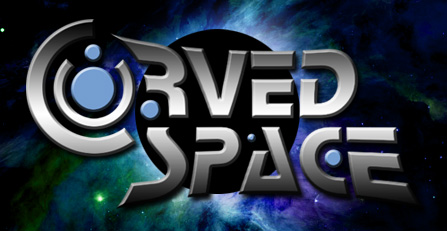Traveling The Milkyway
#1

Posted 04 December 2003 - 12:22 AM
1 A.U. = 150,000,000 KM (Average of earths closet distance to the sun, 148,000,000 KM and its farthest distance from the sun, 152,000,000.)
If we could travel at the speed of 1 A.U. per a second (500x the speed of light) we would fly through the Terrestrial planets within seconds. When we reached the Jovian they would spread out about 3-8 seconds. The total time it would take to reach Pluto (Planet X) is about 40 seconds.
I just thought it was interesting to share...
------------------
According to the big bang theory, the sun "exploded" into a star. Is it possible the sun is still expanding? Can the sun turn into a black hole eventually? If so, when would this happen? EDIT- Ive read that the sun is at its final stage now.
-------------------
Pluto, is not considered a planet but rather a moon. This could be proven so because Pluto crosses Neptunes orbit every so often. This could be because Pluto was sent so out of "whack" that it is still "calibrating" (sp?) itself.
-----------------
Could our universe get more planets? All of the planets orbit with the suns gravity. What are the chances of the sun grabbing in another celestial body and making it become a planet, much like what could have happened to Pluto?

#2

Posted 05 December 2003 - 09:44 PM
| QUOTE |
| As we all know: 1 A.U. = 150,000,000 KM (Average of earths closet distance to the sun, 148,000,000 KM and its farthest distance from the sun, 152,000,000.) If we could travel at the speed of 1 A.U. per a second (500x the speed of light) we would fly through the Terrestrial planets within seconds. When we reached the Jovian they would spread out about 3-8 seconds. The total time it would take to reach Pluto (Planet X) is about 40 seconds. |
Cool
| QUOTE |
| According to the big bang theory, the sun "exploded" into a star. Is it possible the sun is still expanding? Can the sun turn into a black hole eventually? If so, when would this happen? EDIT- Ive read that the sun is at its final stage now. |
They say that the sun formed from a nebula a few billion years ago and the planets formed from the disk of gas circling the sun as a protostar. The nebula's gas is said to have come from supernova remnants from another star. The sun is in a state of relative equilibrium since the outward pressure of the fusion of small elements (like hydrogen, and later helium) is countered by the equal force of gravity pulling everything back toward the center. When the smaller elements fuse into larger elements, and then into larger elements, the sun will begin to die. When iron begins to form in the core, it will begin to pulsate and then expand relatively rapidly and become a red giant (probably in 3 billion years), consuming the Earth and the other inner planets (Mars may remain outside). During this stage it will burn off the rest of its fuel and become a planetary nebula, expelling its outer layers into space. Then all that will be left is an extremely hot and dense core called a white dwarf, which will die out soon after.
| QUOTE |
| Pluto, is not considered a planet but rather a moon. This could be proven so because Pluto crosses Neptunes orbit every so often. This could be because Pluto was sent so out of "whack" that it is still "calibrating" (sp?) itself. |
No one really knows, but it is said to also possibly be a comet. The strange thing is that it has a moon of its own, and this has been confusing scientists lately.
| QUOTE |
| Could our universe get more planets? All of the planets orbit with the suns gravity. What are the chances of the sun grabbing in another celestial body and making it become a planet, much like what could have happened to Pluto? |
New planets are always forming and one or two could be grabbed by the sun's gravity, though this is very unlikely. The current planets (to our knowledge) formed from the original nebula and were therefore already in an orbit around the sun when it formed. The distance to other stars is enormous also, so a planet isn't likely to be caught anytime soon. In fact, the distance is so large that if the length of my school's football field was the distance between Uranus and the sun (I live in Maryland), the nearest star would be in Texas.

#4

Posted 22 July 2004 - 07:27 PM

#5

Posted 12 August 2004 - 12:12 AM
| QUOTE (Bmatt54321 @ Jul 22 2004, 02:27 PM) |
| this is abit of a large ressurection but they have found a 10th planet and named it after an eskimo god, but it may not be called a planet because it is a big ball of gas. but if it isnt allowed to be a planet we will loose jupiter and saturn as planets, so in the next few years we will either go up to 10 planets or down to 7. |
They found another gas planet? Last I knew Sedna was made of ice but I could be wrong.
You may be talking about a planet around another star and be mixing it up with Sedna. They have found planets around other stars that are awfully weird... From gas giants of over 10 times the size of Jupiter to Jupiter-size gas giants racing around stars with orbits closer than that of Mercury and with years of only a few days. They also found them orbiting pulsars, explain that!
^^ Sorry, went a little off topic
Hehe, as for Jupiter and Saturn, they are most definitely planets. If they were to refer to anything else it would probably be a protostar, for if they were much larger (much larger) they would have become stars for their gravitational forces would begin to fuse hydrogen.

#6

Posted 14 August 2004 - 03:54 AM
And dont forget poor old Neptune, sitting out there playing sentinel to the solar system. Beware the great dark spot.
Password: CurvedSpace
/God> rm *
The BEST error message ever: "Cowardly refusing to create an empty archive."
#9

Posted 14 August 2004 - 05:22 AM
^lol, didnt know that one... i knew a diff one.. didnt work as well though
#10

Posted 14 August 2004 - 04:48 PM
well first things first...
the only explanation i can think of is a failed binary star system, something stopped the gas giant from transforming and it just orbited the star normally. and binary stars confuse me enough as it is...
oh and i have no idea what pulsars are, we havent covered that in astronomy yet. should do when we go back.
and do my eyes decieve me or has Rylkan actually posted
edit:yay! my 200th post was not in the insanity board!
This post has been edited by Bmatt54321: 14 August 2004 - 04:54 PM

#11

Posted 15 August 2004 - 06:50 PM
well first things first...
the only explanation i can think of is a failed binary star system, something stopped the gas giant from transforming and it just orbited the star normally. and binary stars confuse me enough as it is...
oh and i have no idea what pulsars are, we havent covered that in astronomy yet. should do when we go back.
and do my eyes decieve me or has Rylkan actually posted
edit:yay! my 200th post was not in the insanity board!
Well, technically any planet could have become a star at one time (with our current knowledge of solar system formation). The star, at the center, just had a larger gravitational influence and collected more matter. As it collected matter (at first particles and later larger bodies) its mass increased, and with this so did its gravitational influence. After a long time the gravity became so immense that the hydrogen in the star began to fuse in its core. This "ignited" the star and started a chain reaction of nuclear fusion which would actually make it a star.
Rarely are binary stars as close as Jupiter is to the Sun (I believe). They are generally far enough apart that they both would be able to collect enough matter. They are considered binary systems if the stars orbit each other around the center of gravity, very similar to how the moon orbits the Earth (they really orbit each other, the Earth is by no means stationary in relation to the moon; they go around the center of gravity which is not the center of the Earth but a point between the center of the Earth and the moon at the given time). This also applies to any other orbiting body, but it is more apparent with our system.
Planets exist around binaries as well, by the way.
I believe that planets could either orbit one star closely or orbit in a figure-eight around both stars. If a planet is really unlucky though, it could be caught between stars completely motionless relative to them (if it gets caught in the center of gravity). This means that the entire planet would be in daylight, the brightness of which would fluctuate as the stars literally orbit around it. The atmosphere could cook if existent. If the stars have a large enough influence it could also pull the planet apart, or maybe partially resulting in an extreme amount of volcanism similar to Jupiter's moon Io.
A pulsar is another name for a neutron star, the super-dense remaining core of a massive star following a supernova. It is the most dense object known in the universe. Normally atoms are on the scale of something like a tennis ball on a football field being the nucleus and the electrons existing at the far ends of the field. In a neutron star the electrons would be right up next to the nucleus, there could not possibly be anything more dense. The weight of a cubic centimeter piece could weigh many tons (please excuse my defiant use of two measurement systems together).
If the star is too small for a neutron star to form, the star would become a white dwarf after a planetary nebula forms and dissipates. If the star is too large for a neutron star to form, after the supernova a black hole would emerge because the matter would not be able to "push back" with the same force as its gravity.
Anyway, yeah, planets orbit them, probably the cores of gas planets with previously outer orbits.
I believe that they could also orbit black holes if far enough away, but right now we would have no way to detect their movement around a black object that gives off no light.

#12

Posted 16 August 2004 - 02:44 AM
And yes, I posted. I love discussing acadmics and especially physics and astronomy, so i likey this place.
Password: CurvedSpace
/God> rm *
The BEST error message ever: "Cowardly refusing to create an empty archive."
#13

Posted 16 August 2004 - 12:55 PM

#15

Posted 29 April 2005 - 07:41 PM
 Sign In
Sign In Register
Register Help
Help

 This topic is locked
This topic is locked

 MultiQuote
MultiQuote






